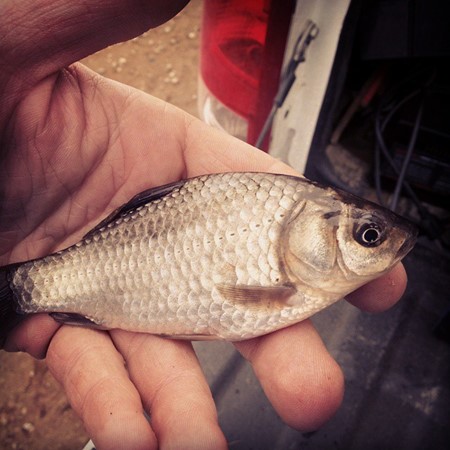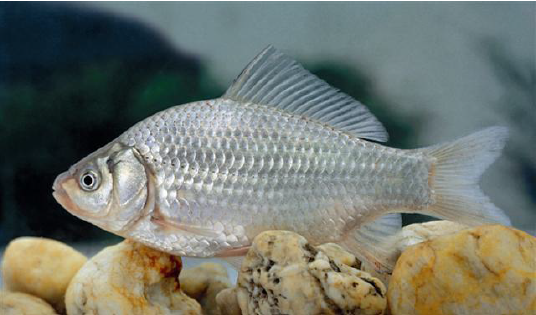Prussian carp
Learn about Prussian carp and how you can help prevent the introduction and spread of this invasive species.
What Ontario is doing
To prevent this unwanted invader from coming into the province, Ontario has regulated Prussian carp (Carassius gibelio) as a prohibited invasive species under the Invasive Species Act, 2015.
Learn about the Invasive Species Act and regulations.
Background
Prussian carp are a silvery-brown fish, commonly mistaken for goldfish. They are found in many different habitats including lakes, rivers and reservoirs, provided there is submerged vegetation or regular flooding.
They are capable of surviving in areas with pollution, high turbidity and low oxygen levels.
They reproduce through gynogenesis, where sperm from other species of fish is used to activate egg development, developing clonal offspring genetically identical to the mother. With this strategy, females can:
- spawn up to three times a year
- have a lifespan of about 10 years
- quickly take over new areas
Prussian carp may be:
- illegally released for recreational purposes
- transported to Ontario due to its similarity to goldfish
- released from aquariums
Range
Prussian carp’s original distribution remains unclear due to:
- widespread European introductions
- its confusion with goldfish
- its complex reproduction methods
However, its native range is believed to be Europe and Asia. In 2006, Prussian carp was first discovered in North America and is currently found only in Alberta and Saskatchewan river systems.
There are no known occurrences of this species in Ontario.
View an up-to-date distribution map of this species in North America.
Impacts of Prussian Carp
Prussian carp are habitat and feeding generalists, which gives them the ability to take over a wide variety of disturbed environments.
Their feeding habits can significantly reduce the populations of small aquatic invertebrates and they may outcompete native species of fish for habitat and food sources.
Prussian carp are associated with:
- decrease in habitat quality
- a decline in aquatic biodiversity
- losses of commercial fisheries
How to identify Prussian carp
The body is typically a silvery-brown colour. They grow to an average length of about 20 to 30 cm, but can reach almost 50 cm. They weigh approximately 2 to 3 kg.
Identification features of similar species
- Prussian carp possess a concave fin on their backs (dorsal fin) as opposed to a convex dorsal fin in crucian carp.
- It is more difficult to distinguish Prussian carp and goldfish, but goldfish are a more golden brown-bronze rather than a silvery-brown.
What you need to know
- Learn how to identify Prussian carp and how to prevent the introduction or spread of this fish to local waterways.
- It is illegal to import, deposit, release, possess, transport, propagate, buy, sell or trade Prussian carp in Ontario.
- Never buy or use Prussian carp as bait or release any live fish into Ontario lakes, rivers or streams.
Reporting illegal activity
If you have any information about the illegal importation, distribution, or sale of Prussian Carp, report it immediately to either:
- the ministry at
1-877-847-7667 , toll-free anytime - Crime Stoppers anonymously at
1-800-222-TIPS (8477)
If you’ve seen Prussian Carp or another invasive species in the wild, please:
- contact the toll free Invading Species Hotline at
1-800-563-7711 - visit EDDMapS Ontario
- search for the ‘Invasive Species in Ontario’ project on iNaturalist.org to report a sighting
Gallery
Photo: University of Alberta Fisheries & Aquatic Conservation Lab
Photo: A. Harka. Licensed under CC BY-SA 3.0 Unported. Available: https://commons.wikimedia.org/wiki/File:Carassius_gibelio_1.jpg. (February 2019)

